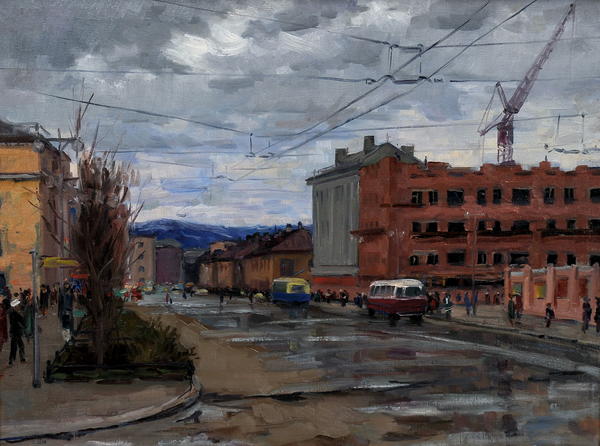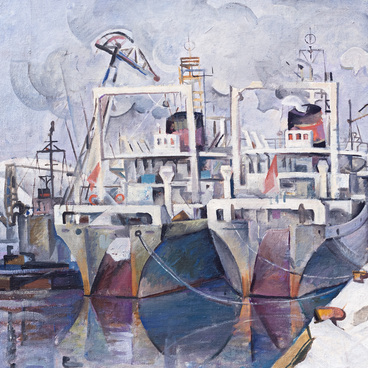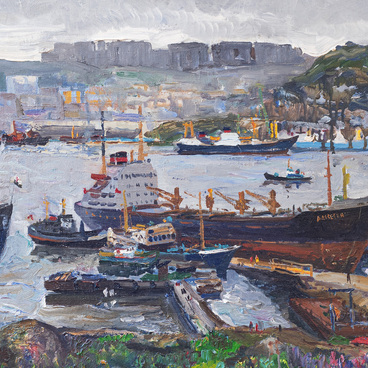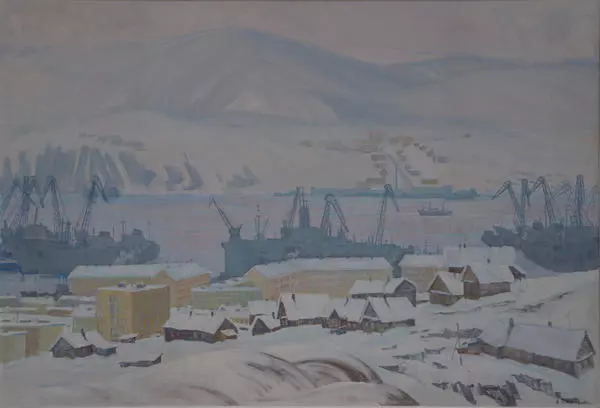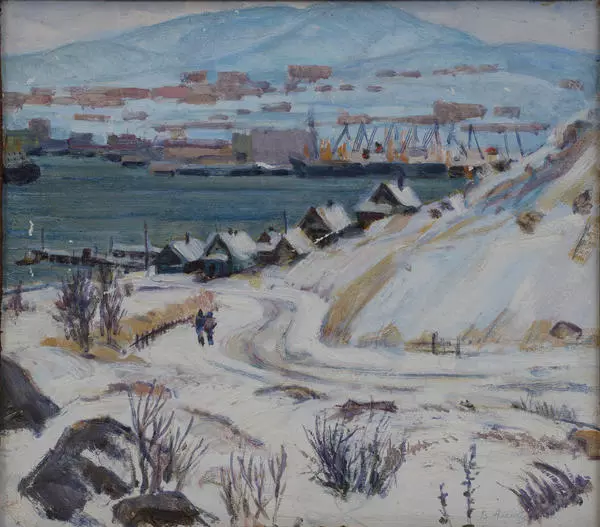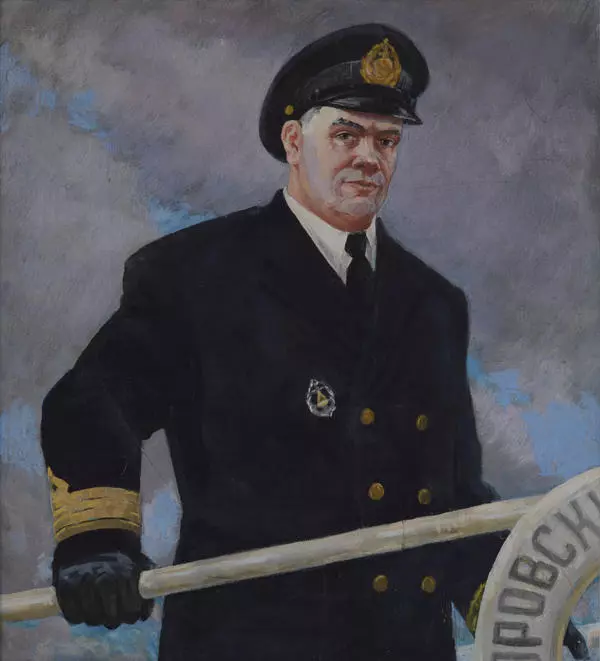Valentin Alekseev was born in 1923 into the family of a blacksmith in the village of Russkoe, Rostov Region.
From 1941 to 1947, he served in the Soviet army, participated in the Great Patriotic War and the liberation of the Oryol region from Nazi invaders.
Graduated from the Rostov Art College named after M.B. Grekov in 1950 and the painting department of the Leningrad Institute of Painting, Sculpture and Architecture named after I.E. Repin in 1957.
In 1957, Alekseev was invited to Murmansk, where he worked as a production designer for the Murmansk Regional Drama Theater and a set designer for the Murmansk Television Studio. Valentin Alekseev designed more than 20 performances, including “Friends and Years” by Leonid Zorin, “Two Maples” by Evgeny Schwartz, “In Search of Joy” by Viktor Rozov, “It Will Be So” by Konstantin Simonov, “Intervention” by Lev Slavin, “The Lost Son” by Alexei Arbuzov, and “Wolves and Sheep” by Alexander Ostrovsky.
In 1961, he was admitted to the Union of Artists of the RSFSR.
Since 1966, Alekseev worked in the Murmansk art and production workshops, and from 1968 to 1978 he was the chief artist of Murmansk.
Valentin Alekseev took part in regional, republican and all-Union art exhibitions, exhibitions in Norway, Finland, Sweden, and Canada. His solo exhibitions were arranged in Murmansk and in Scandinavian countries.
In the late 1980s, the artist moved to a permanent place of residence in the city of Oryol.
In his paintings, the artist skillfully depicted cityscapes, the harsh nature of the Arctic and the courageous people who were transforming the region.
The painting “Murmansk is Being Renewed” is a cityscape. The artist depicted the process of the post-war restoration of the capital of the Arctic territory with almost photographic accuracy. During the Great Patriotic War, Murmansk suffered greatly from numerous attacks by German air and ground forces. In total, over 180,000 bombs were dropped on the city. In terms of the number and density of bombings, Murmansk was second only to Stalingrad. As a result of air attacks, more than half of all city buildings had been destroyed.
From 1941 to 1947, he served in the Soviet army, participated in the Great Patriotic War and the liberation of the Oryol region from Nazi invaders.
Graduated from the Rostov Art College named after M.B. Grekov in 1950 and the painting department of the Leningrad Institute of Painting, Sculpture and Architecture named after I.E. Repin in 1957.
In 1957, Alekseev was invited to Murmansk, where he worked as a production designer for the Murmansk Regional Drama Theater and a set designer for the Murmansk Television Studio. Valentin Alekseev designed more than 20 performances, including “Friends and Years” by Leonid Zorin, “Two Maples” by Evgeny Schwartz, “In Search of Joy” by Viktor Rozov, “It Will Be So” by Konstantin Simonov, “Intervention” by Lev Slavin, “The Lost Son” by Alexei Arbuzov, and “Wolves and Sheep” by Alexander Ostrovsky.
In 1961, he was admitted to the Union of Artists of the RSFSR.
Since 1966, Alekseev worked in the Murmansk art and production workshops, and from 1968 to 1978 he was the chief artist of Murmansk.
Valentin Alekseev took part in regional, republican and all-Union art exhibitions, exhibitions in Norway, Finland, Sweden, and Canada. His solo exhibitions were arranged in Murmansk and in Scandinavian countries.
In the late 1980s, the artist moved to a permanent place of residence in the city of Oryol.
In his paintings, the artist skillfully depicted cityscapes, the harsh nature of the Arctic and the courageous people who were transforming the region.
The painting “Murmansk is Being Renewed” is a cityscape. The artist depicted the process of the post-war restoration of the capital of the Arctic territory with almost photographic accuracy. During the Great Patriotic War, Murmansk suffered greatly from numerous attacks by German air and ground forces. In total, over 180,000 bombs were dropped on the city. In terms of the number and density of bombings, Murmansk was second only to Stalingrad. As a result of air attacks, more than half of all city buildings had been destroyed.

